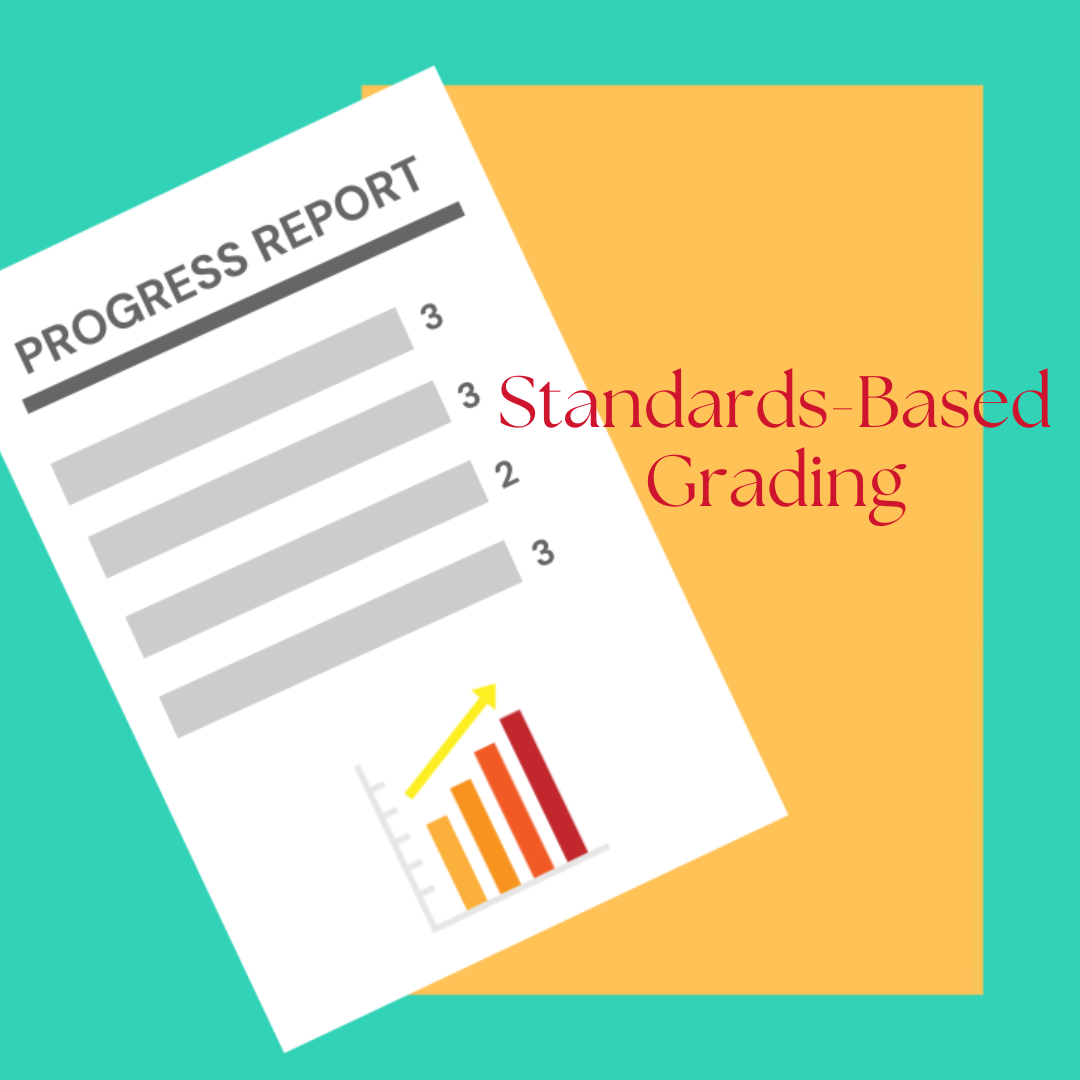DISTRICT
CURRICULUM
SUPPORT SERVICES
Student Registration
QUICK LINKS

Standards-Based Grading
What is standards-based grading?
Standards-based grading (SBG) focuses on learning and helps improve student achievement. It provides a means for measuring student learning and a way to examine the effectiveness of instruction. SBG differs from the traditional approach to grading which typically measures students by the percentage of work completed. Instead, SBG focuses on mastery (or demonstration of proficiency) of standards or standards-based skills at a point in time.
How does SBG work?
Instead of giving one overall grade in a subject, SBG breaks each subject matter down into smaller learning targets. These targets are standards or teachable concepts that are aligned to the standards. Students should demonstrate proficiency or mastery of each target by the end of a unit, module, or by the end of the school year. Teachers track and record student progress of learning targets while providing appropriate feedback and adapting instruction to meet the individual needs of students.
Traditional Report Card
Subject | 1Q |
Mathematics | 95%=A |
Traditional Grading Scale
A | 90-100% |
B | 80-89% |
C | 70-79%` |
D | 60-69% |
F | 0-59% |
Students have ownership of their learning
Students understand learning targets
Students are intrinsically motivated
Students self-assess and reflect on their performance
Instruction is more relevant
A less frustrating learning environment
Allows for differentiation based on grade level standards
Teachers provide effective feedback
Provides direct/specific feedback so students understand areas to improve
Direct and specific feedback accelerates learning
Better measurement of learning
Students understand why they receive each score
Easier to track performance
Details of student level of proficiency
More accurate scores based on learning goals and performance
Grades are NOT calculated on…
Behaviors or Group Work
Turned in Late
Homework completion
Extra Credit
Percent Correct/Points
Score | Descriptor | Explanation |
3.0 | Meeting | The student has demonstrated a thorough knowledge, understanding, and application of the concepts, skills, and processes the grade-level standards require. |
2.0 | Approaching | The student is gaining an understanding of the concepts, skills, and processes the standards require, but needs some additional support. |
1.0 | Developing | The student is beginning to understand the concepts, skills, and processes the standards require and needs consistent additional support. |
NE | No Evidence | No evidence of the learning has been demonstrated. The student needs to engage or apply the concepts, skills, and processes that have been taught. |
SBG helps teachers be responsive to student learning. When teachers start a new learning target, they begin with an introductory lesson. Some students progress immediately, but many do not. It is common to have misunderstandings when you begin learning new information or skills. Teachers use the information they gain from scoring student output to provide feedback, reteach, or extend learning.
Scores do not equate to traditional letter grades A, B, C, D, and F.
A score of 3.0 indicates that a student is right where they need to be - they are MEETING expectations and can perform the grade-level standards.
A score of 2.0 indicates that although a student may not be meeting the grade-level expectation yet, they are making good progress. They are APPROACHING and in need of some additional support to do grade-level work.
A score of 1.0 indicates that a student is DEVELOPING to understand the grade level skills and concepts and needs consistent additional support. A score of “1” no longer requires a “Failure Conference”.
Our goal is for all students to MEET grade level expectations and score 3s in each subject area. Rarely, a student may earn an “NE” indicating that No Evidence of the learning has been demonstrated. A score of “NE” on a report card requires a “Failure Conference ''. A conversation with an administrator is required before giving an NE.
When do I use an S, N, or U?
Scores of “S” for Satisfactory, “N” for Needs Improvement, and “U” for Unsatisfactory are earned in Science and Social Studies. These scores will reflect the level of understanding of the content area as a whole as opposed to showing an understanding of individual standards.
Sample Report Cards
DRAFT of Kindergarten Report Card (2024-2025)
DRAFT of First Grade Report Card (2024-2025)